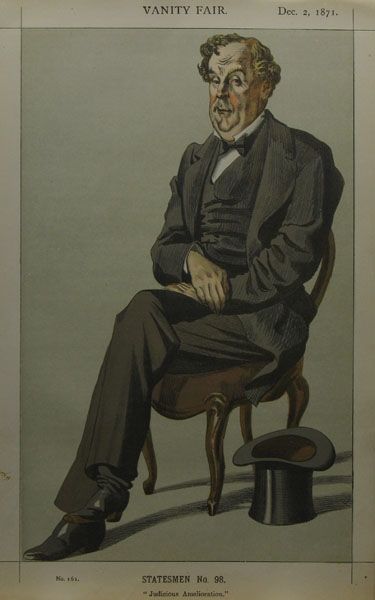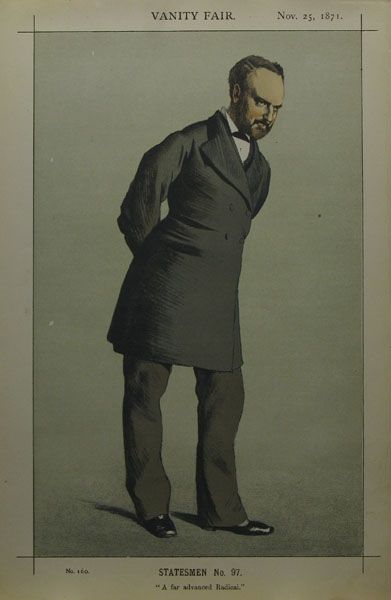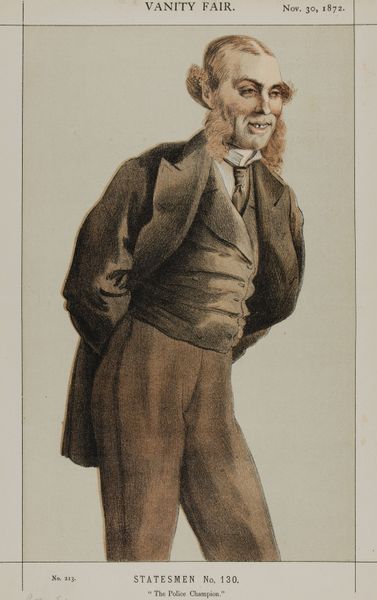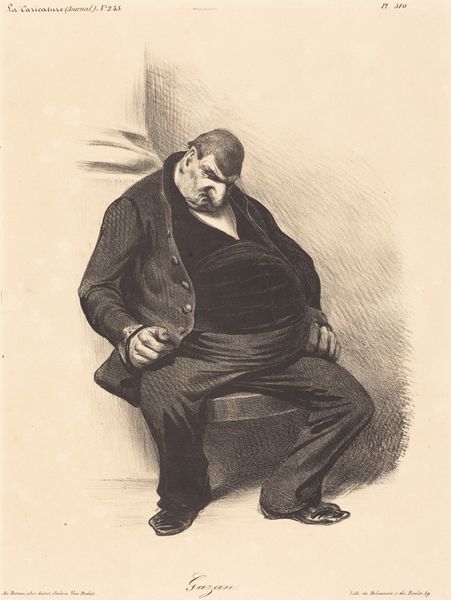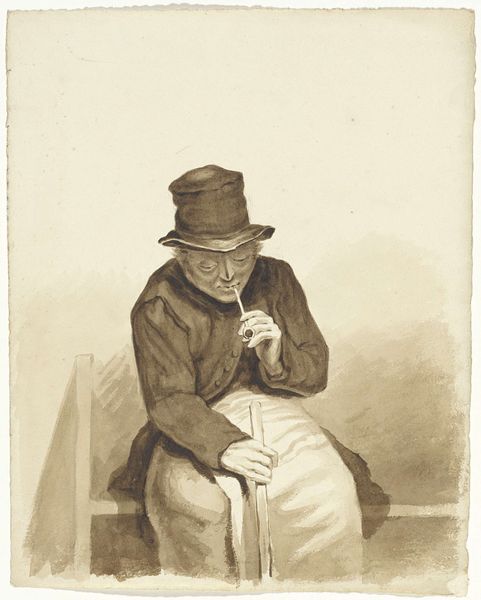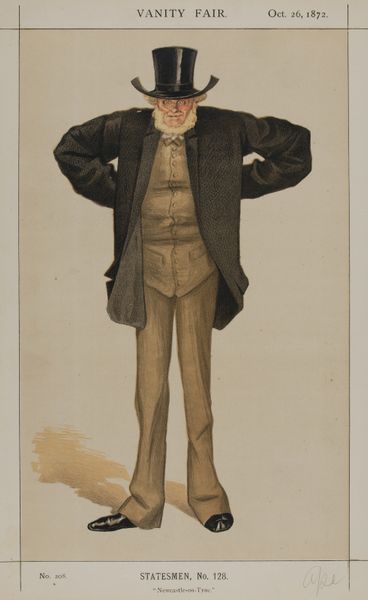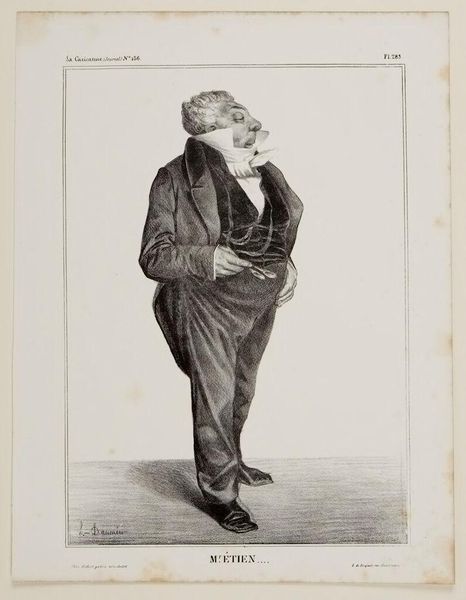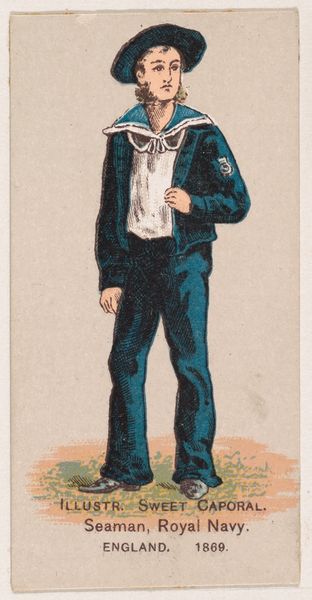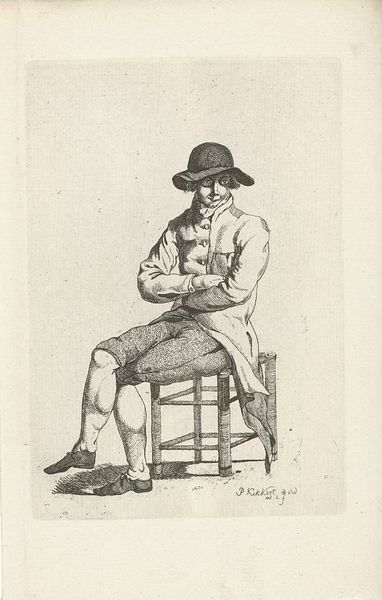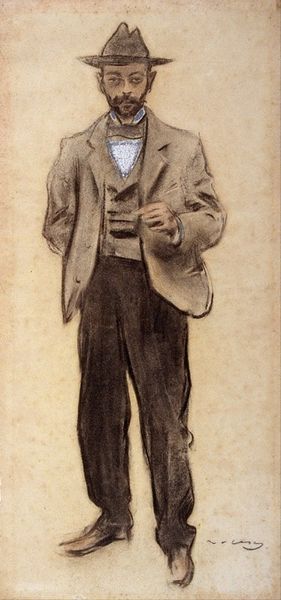
pencil, pen, engraving
#
portrait
#
portrait of cartoonist
#
caricature
#
caricature
#
charcoal drawing
#
figuration
#
famous-people
#
male-portraits
#
portrait head and shoulder
#
pencil
#
animal drawing portrait
#
pen
#
portrait drawing
#
genre-painting
#
academic-art
#
sitting
#
engraving
Copyright: Public domain
James Tissot made this caricature of George William Pierrepont Bentinck, a Member of Parliament, for Vanity Fair magazine in 1871. Such images played a crucial role in shaping public perceptions of political figures. Notice how Tissot exaggerates Bentinck's features – his stout build, his stern expression, and his peculiar neckwear. This reflects the satirical function of publications like Vanity Fair in Victorian England. The image’s title is “Big Ben”, the nickname given to the parliamentarian because of his large size. This was a period of significant political and social change, with debates raging over issues such as electoral reform and the role of the aristocracy. Caricatures like this offered a means of critiquing the establishment, holding politicians accountable to public opinion. To fully understand this image, we can examine the archives of Vanity Fair, studying other caricatures and the accompanying articles. This kind of research enables us to interpret how the magazine participated in the political discourse of its time. It also allows us to understand the social and institutional contexts that shaped the production and reception of art in the Victorian era.
Comments
No comments
Be the first to comment and join the conversation on the ultimate creative platform.
